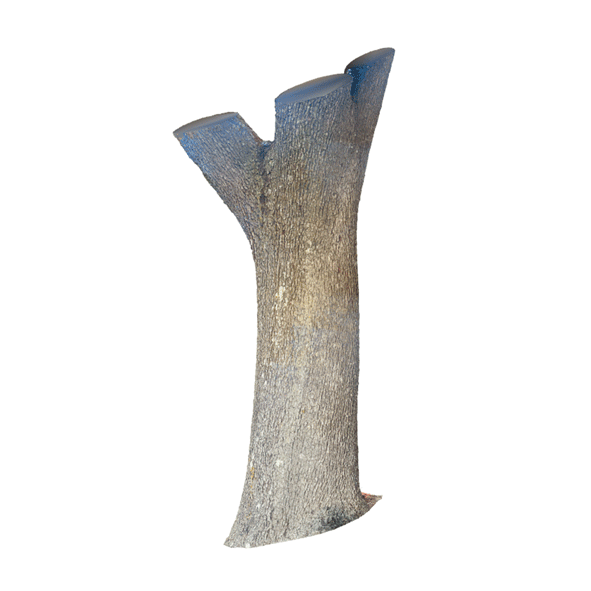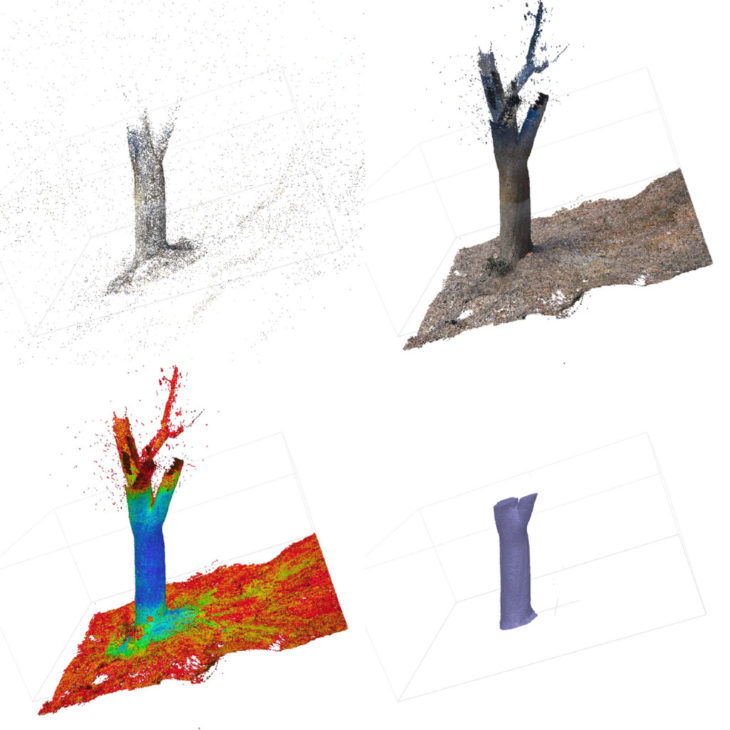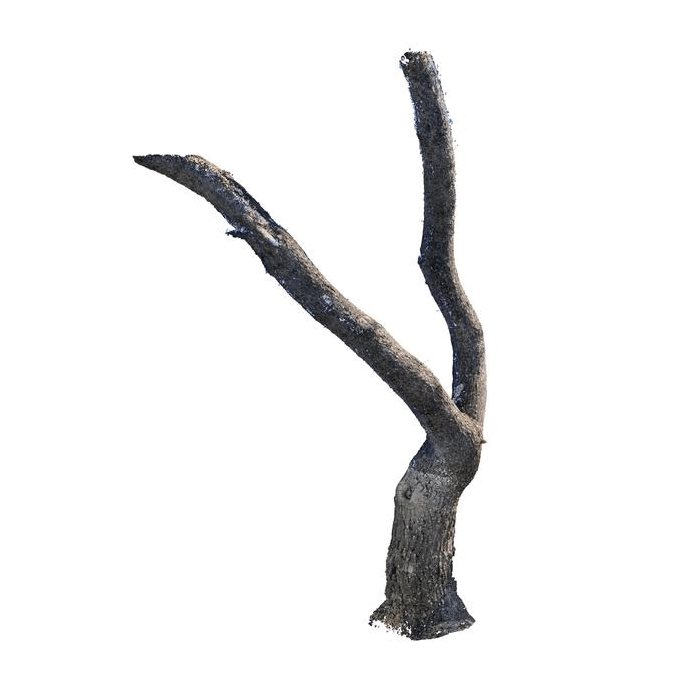Context
This project is a part of research on timber harvesting. The annual tree harvest, which happens in Valldaura Labs, plays a key role in the process of turning back to a predominantly oak ecosystem, now dominated by Aleppo pine (lat. Pinus halepensis) to its primary species (Holly oak; lat. Quercus ilex). The harvested wood is used as a primary building material for ecological building prototypes. It is one of the main objectives to keep the fabrication of the final 1:1 prototype; built in the Summer, as efficient as possible. An important part of harvesting is the use of digital tools which can provide trustful data for monitoring and tracing material usage.
As an introduction to Photogrammetry, Valldaura welcomed a workshop led by Noumena, a tech company implementing data-informed solutions for spatial analytics and strategic planning.
Students were given a task to choose a tree, located in Valldaura forest and prepare a digital model of that tree.

Mesh of a tree trunk obtained after processing the point cloud generated from photos. This one is directly exploitable in a 3D modeler.
Process
To do so, the tree has to be photographed from all sides, preferably with a considerable overlap to allow the software (Agisoft Metashape) to align the common points properly. The next step is scanning the photographs, using the software mention above. The program is able to locate the main feature points of the object by its texture. This process is done in order to create a point cloud, which afterwards is transformed into a dense cloud and lastly into a mesh surface, that can be exported as a Rhino model.

Upper left: Point cloud generated with the pictures taken of a tree trunk. This cloud needs to be processed in order to obtain a 3D model of the object. Upper right: Preview of the dense cloud. This cloud needs to be cleaned by cropping the treated volume and by removing unwanted points. Lower left: Preview of the confidence point cloud. This colour overlay allows to sort the points more accurately. Lower right: The final result of the photogrammetry process is mesh that can be used in any 3D modeler.

Other example of a 3D model of a tree trunk obtained with photogrammetry.

With this type of tool, it is possible to slice a 3D model of trunk to have an estimation of the available timber, this way, the design can be adapted based on this new data.
Conclusion
During the process students could observe that it is important to have good access and a lot of space around the object to take the photos. Meaning, it is much easier to collect a data of a lonely standing tree as opposed to one within the forest.
Operating Photogrammetry can allow for converting physical objects into data. Creating “digital twins” for optimization and traceability operations, manufacturing process and design serves for more efficiency in building and planning construction.
This workshop is part the teaching program of IAAC, Institute for Advanced Architecture of Catalonia, developed at Masters in Advanced Ecological Buildings and Biocities in 2021-22 by:
Students: Prachi Agarwal, Pongpol Punjawaytegul, Suwapat Rodprasert, Roshni Shah, Shagun Modi, Iletutu Awosika, Prasidh Choudhary, Romain Russe, Kshitij Sarote, Zani Gichuki, Agnieszka Szklarczyk, Lillian Beauttah, Andrea Rubio, Pablo Herraiz García de Guadiana, Rachael Verdugo, Leif Riksheim and Anton Hofstadt.
Faculty: Noumena